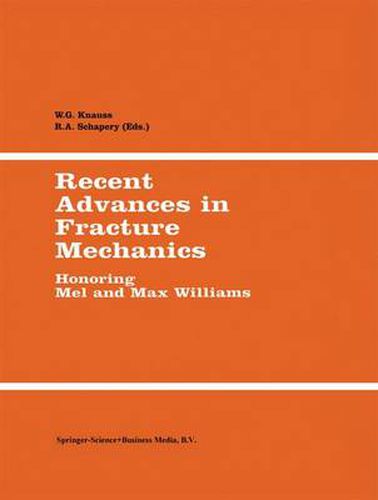Readings Newsletter
Become a Readings Member to make your shopping experience even easier.
Sign in or sign up for free!
You’re not far away from qualifying for FREE standard shipping within Australia
You’ve qualified for FREE standard shipping within Australia
The cart is loading…






The papers in this volume represent a considerable cross-section of the field of fracture mechanics, a testimony to the breadth of interest that Mel and Max Williams’ friends share with them. Several are expanded versions of papers that were given in special sessions honoring them at the 1997 Ninth International Conference on Fracture Mechanics in Sydney, Australia.
The subjects treated in this volume can be classified as follows: dynamic fracture problems as viewed primarily from a classical continuum point of view; analysis of relatively general crack geometrics; fracture problems of polymers and other relatively ductile materials; scaling rules that allow extension of results obtained at one size to be translated into behavior at different size scales; problems dealing with interactions that produce complex stress fields; fracture problems directly appropriate to composite materials; analysis of stress concentrations in anisotropic, elastic solids; and the problem of cracks in thin plates bending.
This volume will be of interest to engineers and scientists working on all aspects of the physics and mechanics of fracture.
$9.00 standard shipping within Australia
FREE standard shipping within Australia for orders over $100.00
Express & International shipping calculated at checkout
The papers in this volume represent a considerable cross-section of the field of fracture mechanics, a testimony to the breadth of interest that Mel and Max Williams’ friends share with them. Several are expanded versions of papers that were given in special sessions honoring them at the 1997 Ninth International Conference on Fracture Mechanics in Sydney, Australia.
The subjects treated in this volume can be classified as follows: dynamic fracture problems as viewed primarily from a classical continuum point of view; analysis of relatively general crack geometrics; fracture problems of polymers and other relatively ductile materials; scaling rules that allow extension of results obtained at one size to be translated into behavior at different size scales; problems dealing with interactions that produce complex stress fields; fracture problems directly appropriate to composite materials; analysis of stress concentrations in anisotropic, elastic solids; and the problem of cracks in thin plates bending.
This volume will be of interest to engineers and scientists working on all aspects of the physics and mechanics of fracture.